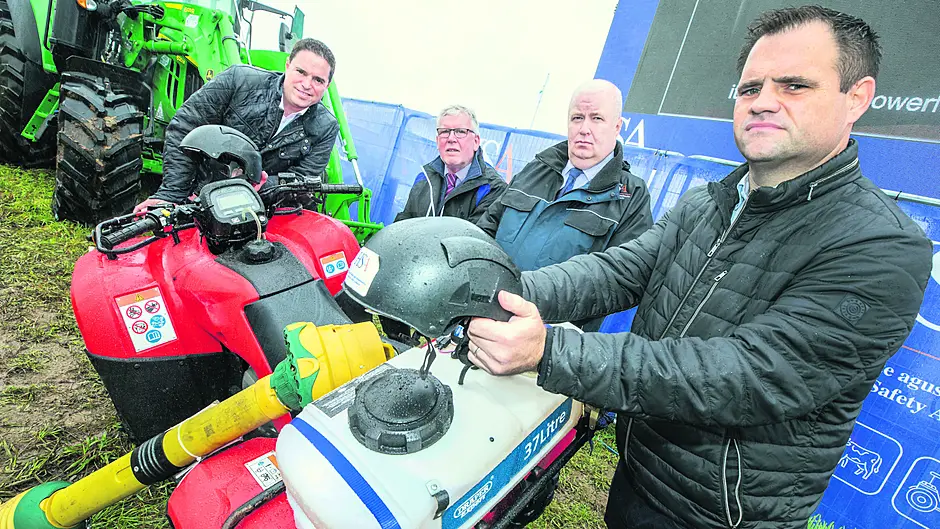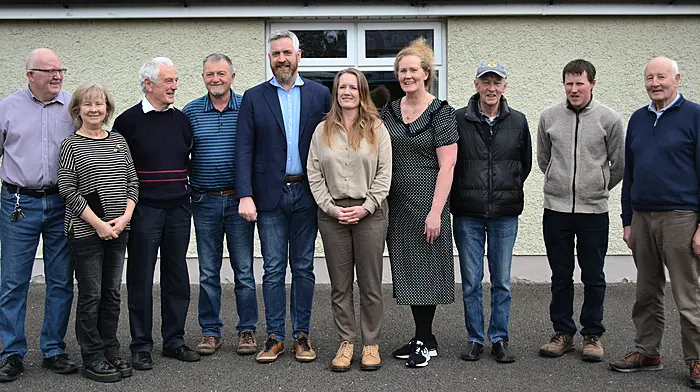QUAD bikes have become a common sight on many West Cork farms and new laws on their safety will come into effect later this year, including compulsory helmet-wearing.
The regulations governing their use will be the first of their kind in Europe, says the government, and come into force on November 20th. The regulations make helmet compulsory while all quad bike operators will have to undergo training.
There were 191 fatalities recorded on farms during the past decade (2013 – 2022) – 52% of which were fatalities involving farm machinery and vehicles, including quad bikes. So far this year, there has been seven work-related farming fatalities.
‘Farming is still the most dangerous sector in Ireland,’ said Minister of State at the Department of Agriculture, Food and the Marine, Martin Heydon said. ‘Working to promote the safe use of all farm vehicles and machinery is crucial in preventing any further fatalities or injuries on Irish farms.’
HSA ceo Conor O’Brien said work-related fatalities happening to victims from all age groups. ‘Of the 191 fatalities on farms in Ireland over the past decade (2013 – 2022), 21 were aged under 18 years old. This drives home the need for appropriate procedures to be put in place to protect everyone in a workplace, be they employees, contractors, or visitors and family members on farms. Proper risk assessments and health and safety considerations must be implemented in all workplaces, including farms, to ensure everyone’s safety. Because no job is worth a loss of life, injury or illness,’ he added.
HSA senior inspector Pat Griffin said there has been a significant increase in the number of farmers contacting the Health and Safety Authority. The HSA’s free online farm risk assessment tool farmsafely.com, has recorded an increase in registrations, now with over 16,500 registered users.
Meanwhile a video on farm vehicle safety and blind has been produced by Teagasc in association with FBD Insurance and the Farm Safety Partnership Advisory Committee to the Health and Safety Authority.
The video focuses on increasing awareness and taking steps to prevent being struck by a tractor or farm vehicle, particularly in farmyards, which account for about 80% of farm vehicle fatalities. The video deals with design of farmyards including the segregation of pedestrians and the safe use of the large modern tractors.
The video focuses on ‘Blind Spots’ where tractor driver vision is impeded, meaning that people who are in close proximity to the vehicle cannot be seen by the driver. Shorter in height people and children are even harder to see when in the blind spots. The video demonstrates how tractor speed increases the risk of being struck. Even at 10kph a tractor travels 2.8 metres per second, giving a bystander little time to avoid being struck.
The Farm Vehicle Safety and Blind Spots video has been made in follow-up to PhD research conducted by Ms Aswathi Surendran at the School of Psychology, University of Galway in association with Teagasc at Athenry and Kildalton centres.
Ms Surendran’s research focused on ‘Developing and Pilot testing Behavioural Interventions for Farm Machine Safety’ and was funded by the Department of Agriculture, Food and the Marine (DAFM) through the Teagasc BeSafe Research Project. Ms Surendran pointed out that ‘though farmers understand that blind spots exist and that tractors take time to stop, they often did not realise how much they couldn’t see and how far a tractor can move after braking’.
The project team wanted to ensure that the workshops’ impact makes a positive impact at farm level. They worked with farmers to help them train their family members and employees about blind spots and tractor speed by running their own workshops on their farms.
The Farm Vehicle Safety and Blind Spots’ video can be viewed at https://www.teagasc.ie/rural-economy/farm-management/farm-health--safety/videos/








